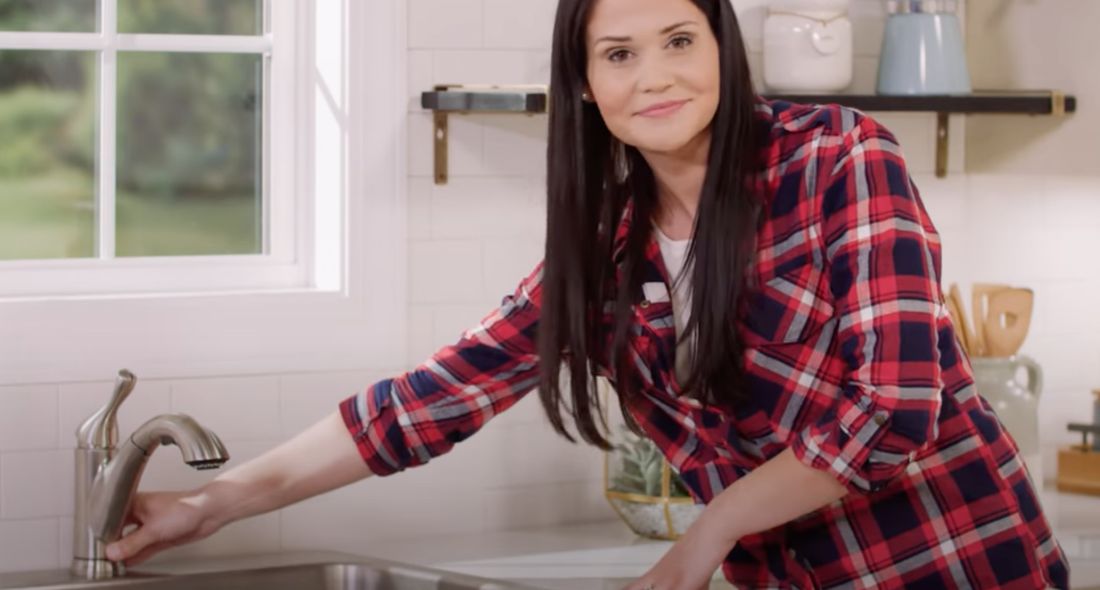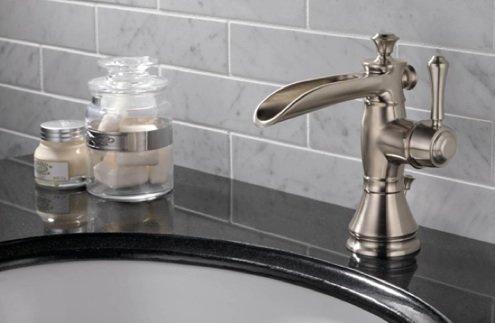Why It's Essential to Mend a Malfunctioning Faucet
Why It's Essential to Mend a Malfunctioning Faucet
Blog Article
What are your opinions about Why Are My Faucets Dripping (And Can I Fix It Myself)??

Dripping faucets may seem like a minor hassle, however their effect goes beyond just the aggravation of the audio. From wasting water to sustaining unneeded financial costs and health and wellness threats, overlooking a leaking faucet can result in various repercussions. In this post, we'll look into why it's vital to address this usual household issue without delay and successfully.
Waste of Water
Environmental Effect
Trickling faucets contribute dramatically to water wastage. According to the Epa (EPA), a solitary tap trickling at one drip per secondly can waste more than 3,000 gallons of water per year. This not just strains water sources but additionally affects ecological communities and wild animals dependent on them.
Financial Costs
Increased Water Bills
Beyond the environmental impact, dripping taps can blow up water bills considerably. The gathered wastefulness in time equates into higher energy expenses, which might have been stayed clear of with timely repairs.
Possible Residential Property Damages
Moreover, prolonged leaking can cause harm to components and surfaces surrounding the tap. Water build-up can create discoloration, rust, and even architectural problems if left unattended, resulting in extra fixing costs.
Health Concerns
Mold And Mildew and Mold Development
The continuous presence of dampness from a trickling faucet creates an ideal atmosphere for mold and mildew and mold growth. These fungis not only compromise indoor air top quality however additionally pose wellness risks, especially for people with respiratory problems or allergic reactions.
Waterborne Conditions
Stationary water in dripping faucets can end up being a breeding place for germs and various other pathogens, raising the risk of waterborne diseases. Contaminants such as Legionella germs thrive in stationary water, potentially bring about severe ailments when consumed or breathed in.
Do it yourself vs. Professional Fixing
Pros and Cons of DIY Repair
While some might attempt to take care of a leaking faucet themselves, DIY repair services feature their very own collection of difficulties. Without appropriate knowledge and devices, DIY attempts can intensify the issue or cause incomplete repairs, prolonging the trouble.
Benefits of Hiring an Expert Plumber
Working with a specialist plumber guarantees that the underlying reason for the leaking faucet is addressed efficiently. Plumbing professionals possess the proficiency and equipment to identify and fix faucet concerns efficiently, conserving time and minimizing the danger of more damages.
Step-by-Step Guide to Dealing With a Dripping Faucet
Devices Required
Prior to attempting to deal with a dripping tap, collect the necessary tools, consisting of an adjustable wrench, screwdrivers, substitute components (such as washers or cartridges), and plumber's tape.
Common Faucet Issues and Their Solutions
Recognize the kind of tap and the specific problem causing the drip. Common problems consist of worn-out washers, rusty shutoff seats, or faulty O-rings. Refer to producer instructions or on the internet tutorials for detailed guidance on repair work.
Safety nets
Routine Maintenance Tips
To stop leaking faucets, execute routine upkeep such as cleansing aerators, inspecting for leaks, and changing worn-out components immediately. In addition, take into consideration installing water-saving tools or updating to much more reliable fixtures.
Value of Prompt Fixes
Attending to trickling faucets as soon as they're noticed stops further water wastefulness and potential damage, ultimately saving both water and money in the long run.
Influence On Residential Or Commercial Property Worth
Assumption of Well-Maintained Residential Or Commercial Property
Preserving a home in good condition, consisting of resolving maintenance problems like trickling faucets, improves its regarded value and worth amongst possible buyers or lessees.
Influence on Resale Worth
Characteristics with well-maintained plumbing components, consisting of faucets, command higher resale values in the realty market. Resolving dripping taps can add to a positive impression during property evaluations and settlements.
Ecological Duty
Specific Payment to Preservation
Taking duty for repairing leaking faucets lines up with more comprehensive efforts toward water preservation and environmental sustainability. Every individual's actions collectively make a significant effect on maintaining precious sources.
Sustainable Living Practices
By prioritizing punctual fixings and embracing water-saving habits, individuals add to sustainable living methods that profit both present and future generations.
Verdict
Dealing with a dripping tap exceeds mere comfort; it's a necessary action toward preserving water, lowering monetary costs, and safeguarding health and wellness and residential or commercial property. Whether through do it yourself fixings or professional support, taking action to deal with trickling faucets is a little yet impactful method to promote liable stewardship of resources and contribute to a healthier, much more lasting future.
How to Fix a Leaky Faucet: Step-by-Step Repair Guide
A leaky faucet may seem like a simple annoyance, but if it's not fixed promptly, that leak could cost hundreds to potentially thousands. From water damage to mold, mildew, and high water bills, even a tiny leak can be catastrophic if left unattended. Damage like this can even affect the overall value of your home, so it's important to take the right approach for leaky faucet repair. You may need the help of a plumber in some cases, but we've got a few tips you can try on how to fix a leaky faucet before calling the pros.
Four Faucet Types
When you're learning how to fix a leaky faucet, the first step is knowing what kind of faucet you're working with! There are four common types.
Cartridge Faucets
Cartridge faucets come in one- or two-handled varieties. In one-handled cartridge faucets, hot and cold water combines in a single cartridge. In the two-handled versions, hot and cold water are controlled separately and mixed in the faucet.
Ball Faucets
Ball faucets have a single lever you push up and down to adjust the pressure and rotate to change the temperature. A slotted metal ball controls the amount of water allowed into the spout.
Compression Washer Faucets
They're the oldest type of faucet, but they're still used in many homes — especially older ones. Compression faucets have two separate handles that, when turned, raise or lower the washer that seals a water valve. This valve stops water from flowing through the faucet when it is turned off.
Disc Faucets
Disc faucets rarely need to be repaired due to their maintenance-free design. The water flow is controlled by two discs — the upper one raises and lowers against a fixed lower disc, creating a watertight seal. If your disc faucet starts leaking, you may need to replace the seals or clean residue buildup from the inlets.
Fixing a Leaky Faucet
Step 1: Turn Off the Water
Whether you're learning how to fix a leaky bathtub faucet or how to fix a leaky kitchen faucet, always turn off the water supply to your working area when you're fixing a leak. The last thing you want is a flood added to your list of things to fix.
Look for the shutoff valves below your sink or around the tub and turn them clockwise to stop the water flow. If your faucet doesn't have shutoff valves, you may need to turn off the water for the whole house. Check to make sure it's off by turning the faucet on. If nothing comes out, you're ready to start the repair.
Step 2: Take Apart the Faucet
How you disassemble your faucet depends on the type of fixture you have. You can use a flathead screwdriver to remove the caps on top of the handle or handles for cartridge and compression faucets. Inside, you should see handle screws. Unscrew these with a screwdriver to remove the handle.
Disc- and ball-style faucets will typically have an inlet screw near the handle, and removing that will reveal the interior of the faucet.
Detach the Valve Stem
For cartridge- and compression-style faucets, you'll see the inner valve stem or cartridge once you remove the faucet handles. If you have a compression faucet, unscrew the brass valve stem. If you have a cartridge faucet, pull out the cartridge. If your cartridge has been in place for a while, it may require some tools or extra force to remove it due to mineral deposits.
Examine and Replace Parts
Once you've removed the parts, check them out to confirm what needs to be replaced. You may see corroded rubber washers, O-rings, stems, or cartridges. On a ball-style faucet, check the seats and springs for damage.
If you need to repair a leaky disc faucet, check the inlet and seals on the lower disc.
Once you determine what parts must be replaced, visit your local hardware store. Bring the damaged parts with you to ensure you can purchase the correct components to replace them.
Clean Valves and Faucet Cavity
If you've removed a stem or cartridge, you may notice mineral buildup in the faucet's threads. Use white vinegar to clean the valve seat by soaking it for a few minutes, then scrub it away with a soft toothbrush and rinse with warm water. You can also clean the interior of the faucet in the same way.
Reassemble the Faucet
Once your faucet is cleaned and the required parts have been replaced, it's time to reassemble it. Put the pieces back together and slowly turn the water supply back on. Doing this slowly is crucial because too much initial water pressure can damage the new hardware you've just installed.
https://homewarranty.firstam.com/blog/how-to-fix-leaky-faucet

I'm just very occupied with Should I Repair or Replace a Leaky Faucet? and I am praying you enjoyed the entire blog posting. Are you aware of somebody else who is curious about the niche? Please feel free to promote it. We treasure reading our article about Why Is It Important To Fix Your Leaking Tap/Faucet?.
Report this page